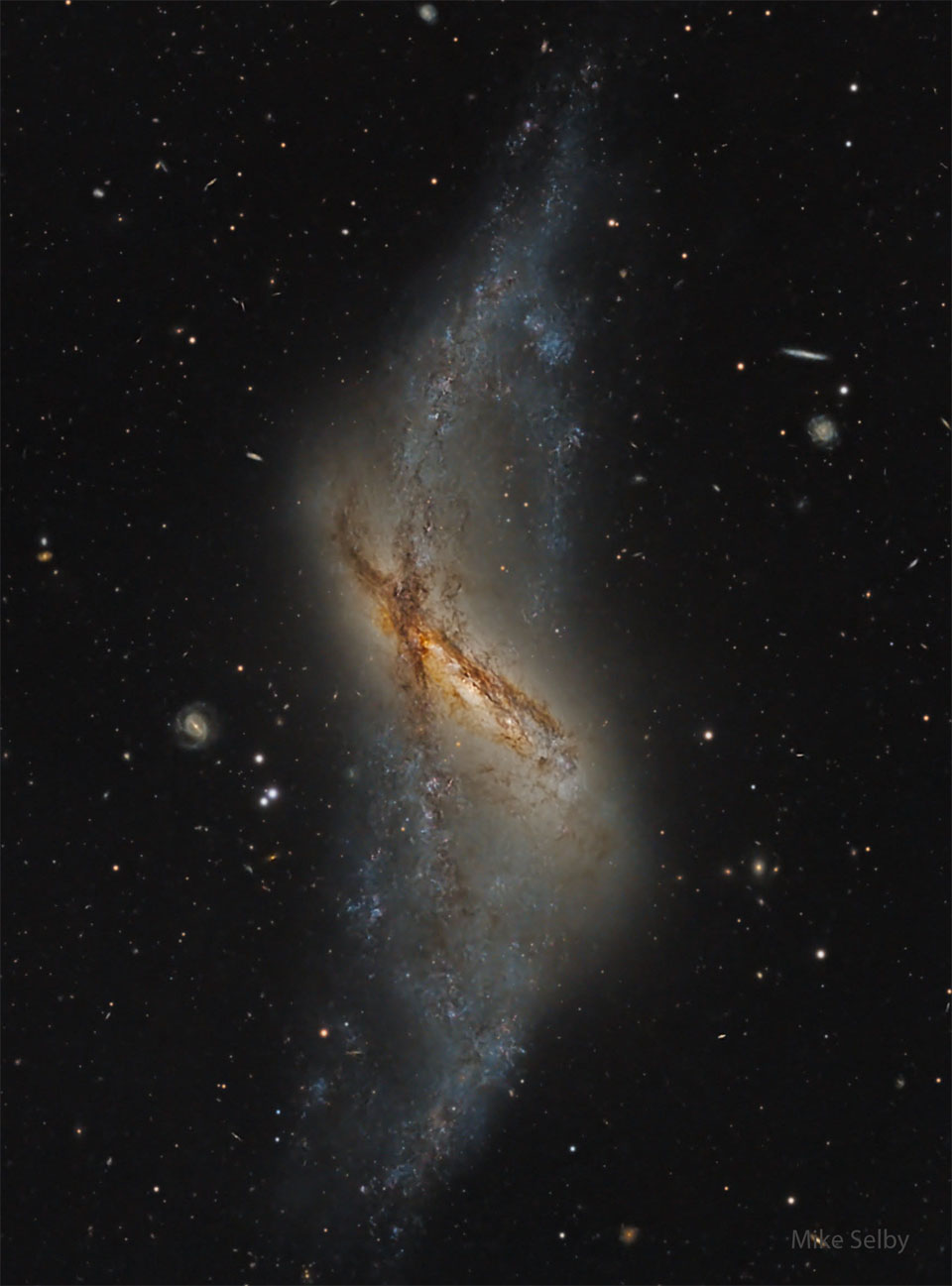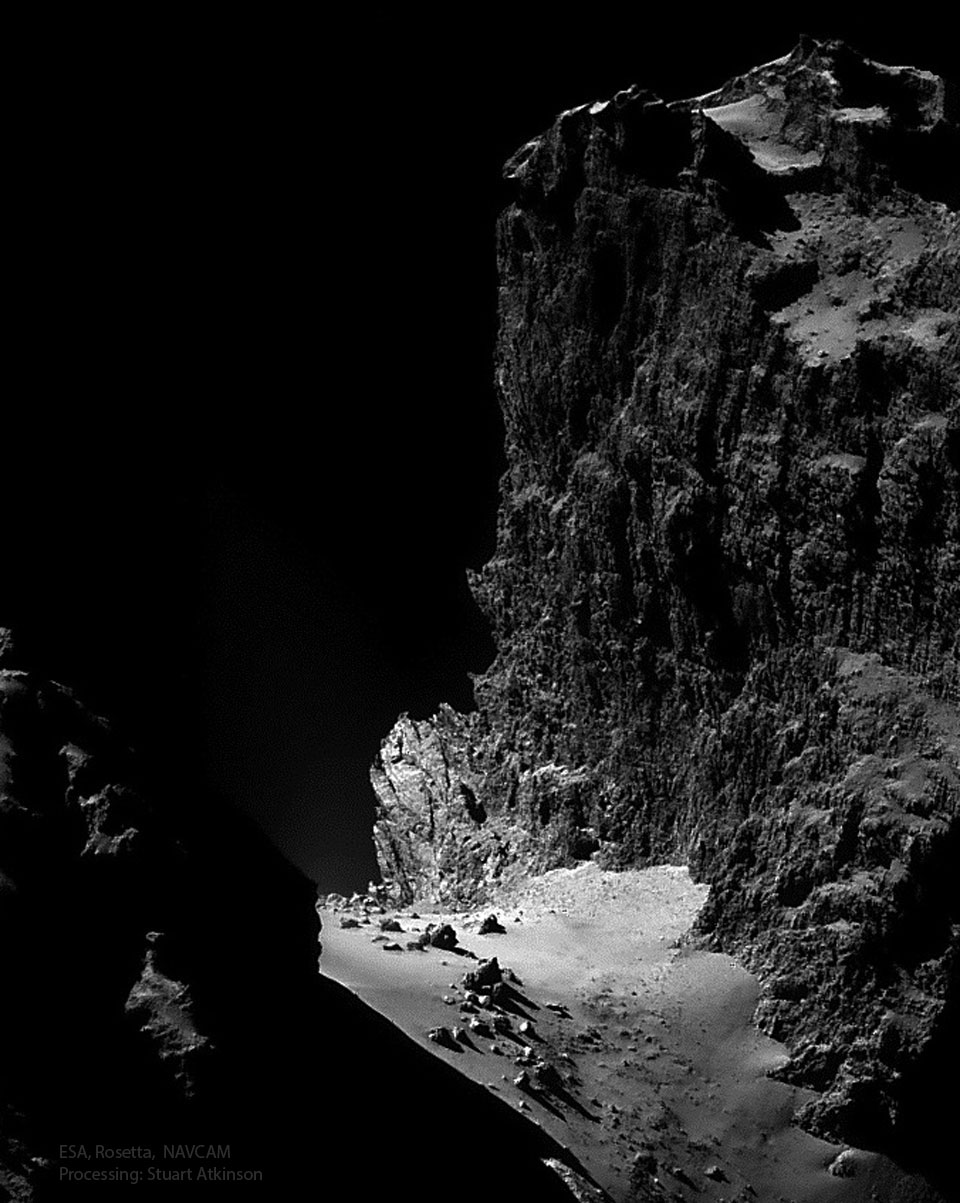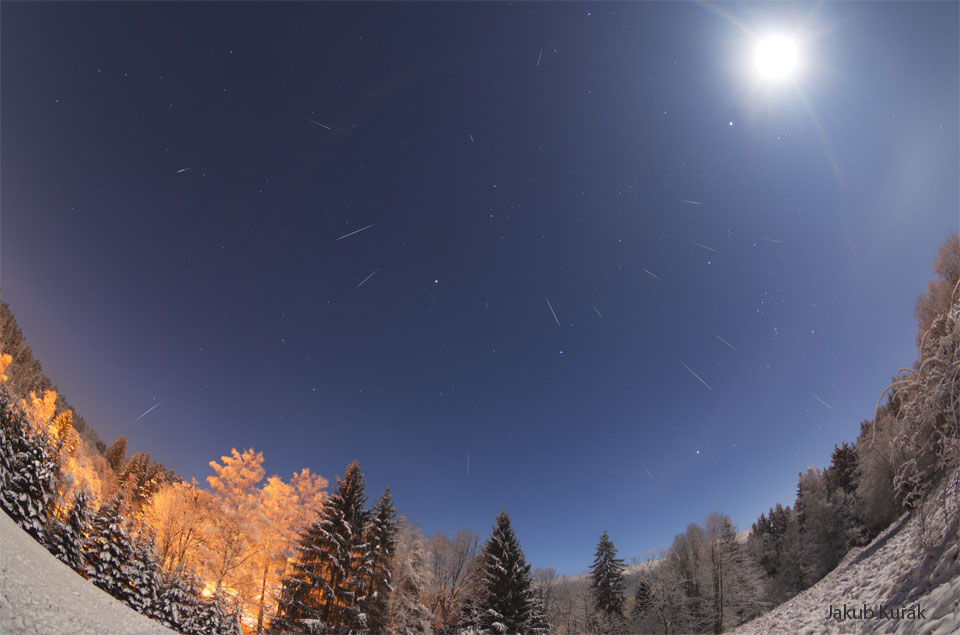Nombre total de pages vues
18/12/2024
SANTé/MEDECINE - Le cancer du sein - HER2+, un récepteur surexprimé dans certains cancers du sein
ASTRONOMIE - Les plus beaux astres de La Voie Lactée - HD 188753 : en orbite dans un système stellaire triple
SANTé/MEDECINE - Les aliments à banir au Supermarché - Les graisses végétales hydrogénées : un piège pour votre cœur
ASTRONOMY - NGC 660: Polar Ring Galaxy
2024 December 18
Image Credit & Copyright: Mike Selby
Explanation: What kind of strange galaxy is this? This rare structure is known as a polar ring galaxy, and it seems to have two different rings of stars. In this galaxy, NGC 660, one ring of bright stars, gas, and dark dust appears nearly vertical, while another similar but shorter ring runs diagonally from the upper left. How polar ring galaxies obtain their striking appearance remains a topic of research, but a leading theory holds that it is usually the result of two galaxies with different central ring planes colliding. NGC 660 spans about 50,000 light years and is located about 40 million light years away toward the constellation of the Fish (Pisces). The featured image was captured recently from Observatorio El Sauce in Chile.
17/12/2024
ASTRONOMY - Near to the Heart Nebula
2024 December 17
Image Credit & Copyright: Jeff Horne & Drew Evans
Explanation: What excites the Heart Nebula? First, the large emission nebula on the upper left, catalogued as IC 1805, looks somewhat like a human heart. The nebula glows brightly in red light emitted by its most prominent element, hydrogen, but this long-exposure image was also blended with light emitted by sulfur (yellow) and oxygen (blue). In the center of the Heart Nebula are young stars from the open star cluster Melotte 15 that are eroding away several picturesque dust pillars with their atom-exciting energetic light and winds. The Heart Nebula is located about 7,500 light years away toward the constellation of Cassiopeia. This wide field image shows much more, though, including the Fishhead Nebula just below the Heart, a supernova remnant on the lower left, and three planetary nebulas on the image right. Taken over 57 nights, this image is so deep, though, that it clearly shows fainter long and complex filaments.
16/12/2024
ASTRONOMIE - Les plus beaux astres de La Voie Lactée - Hypérion : une lune de Saturne
SANTé/MEDECINE - Les aliments à banir au Supermarché - Le sirop de glucose-fructose
ASTRONOMY - A Kilometer High Cliff on Comet Churyumov - Gerasimenko
2024 December 16
Image Credit & Licence (CC BY-SA 3.0 IGO): ESA, Rosetta spacecraft, NAVCAM; Additional Processing: Stuart Atkinson
Explanation: This kilometer high cliff occurs on the surface of a comet. It was discovered on the dark nucleus of Comet Churyumov - Gerasimenko (CG) by Rosetta, a robotic spacecraft launched by ESA, which orbited the comet from 2014 to 2016. The ragged cliff, as featured here, was imaged by Rosetta early in its mission. Although towering about one kilometer high, the low surface gravity of Comet CG would likely make a jump from the cliffs by a human survivable. At the foot of the cliffs is relatively smooth terrain dotted with boulders as large as 20 meters across. Data from Rosetta indicates that the ice in Comet CG has a significantly different deuterium fraction -- and hence likely a different origin -- than the water in Earth's oceans. The probe was named after the Rosetta Stone, a rock slab featuring the same text written in three different languages that helped humanity decipher ancient Egyptian writing.
15/12/2024
ASTRONOMIE - Les plus beaux astres de la Voie Lactée - L’exoplanète Corot-7b
ASTRONOMY - Gemini Meteors over a Snowy Forest
2024 December 15
Image Credit & Copyright: Jakub Kuřák
Explanation: Meteors have been flowing out from the constellation Gemini. This was expected, as mid-December is the time of the Geminid Meteor Shower. Pictured here, over two dozen meteors were caught in successively added exposures taken over several hours early Saturday morning from a snowy forest in Poland. The fleeting streaks were bright enough to be seen over the din of the nearly full Moon on the upper right. These streaks can all be traced back to a point on the sky called the radiant toward the bright stars Pollux and Castor in the image center. The Geminid meteors started as sand sized bits expelled from asteroid 3200 Phaethon during its elliptical orbit through the inner Solar System.
ASTRONOMY - STEVE: A Glowing River over France
2024 October 28 STEVE: A Glowing River over France Credit & Copyright: Louis LEROUX-GÉRÉ Explanation: Sometimes a river of hot gas flo...

-
2022 September 26 All the Water on Planet Earth Illustration Credit: Jack Cook, Adam Nieman, Woods Hole Oceanographic Institution ; Data ...
-
2025 May 11 The Surface of Venus from Venera 14 Image Credit: Soviet Planetary Exploration Program , Venera 14 ; Processing & Copyri...









